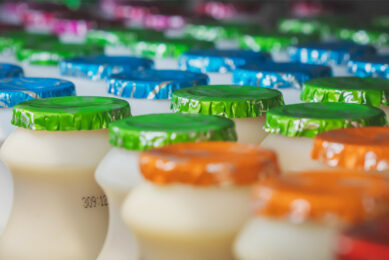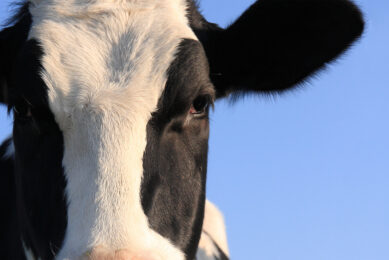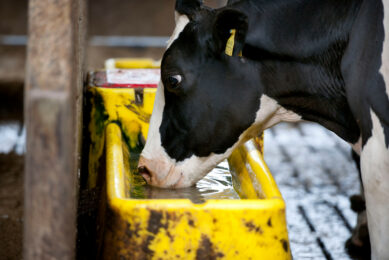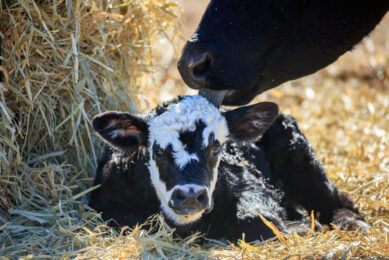Genetics of heat tolerance in dairy cattle
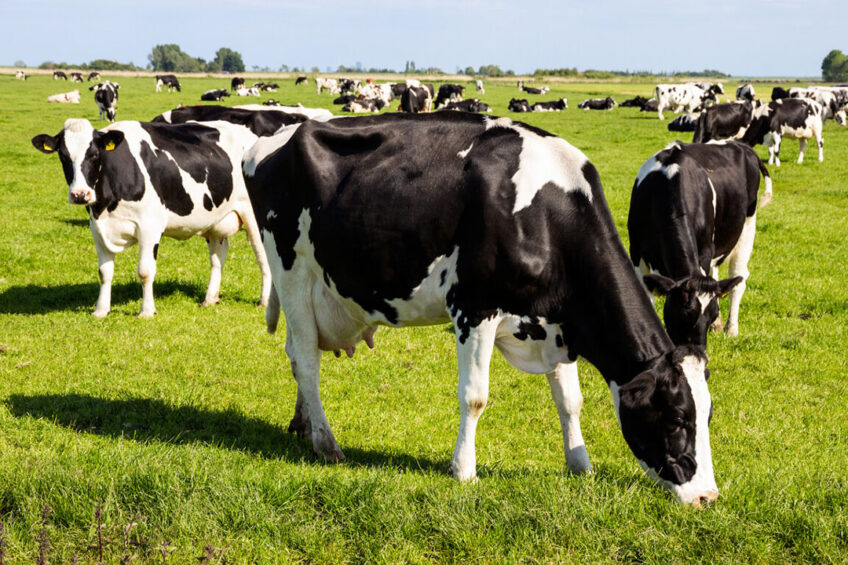
Improving the ability to cope with adverse environmental conditions in dairy cattle is a great challenge in selective breeding. Among traits contributing to dairy cattle adaptability to environmental variation, heat tolerance plays an essential role.
Heat stress in dairy cattle results in economic losses due to reduced feed intake, milk production and reproduction performance and increased lameness, disease incidence, days open and death rates. In addition, there is an increasing concern about heat stress in dairy cattle specially in temperate areas due to climate change, higher metabolic heat production and increased heat susceptibility in high-producing dairy cattle. Studies found significant genetic variation in dairy cattle response to heat stress; therefore, genetic selection for improved heat tolerance is possible.
Heat stress
Dairy cattle generate heat by digesting feed and producing milk and they absorb solar heat when out in the sun. Heat stress is defined as the condition where the animal is not able to adequately dissipate the excess of generated and absorbed heat to maintain body thermal balance. Heat stress leads to increased respiration rates, body temperature, and sweating. Dairy cows begin to experience mild heat stress at around 72°F (22.2°C) with 50% humidity. High-producing cows eat more and generate more heat; therefore, they begin to experience heat stress in well-ventilated barns at air temperatures as low as 65°F (18.3°C).
“…heifer calves from heat-stressed cows produce less milk for the first 30 weeks of lactation.”
Why is heat stress an important issue?
Heat stress leads to reduced dry matter intake, milk production and pregnancy rates in dairy cattle. Heat-stressed late gestation cows have shorter gestation periods, calves with lower birth weights, reduced milk production and impaired immune function. Moreover, heifer calves from heat-stressed cows produce less milk for the first 30 weeks of lactation after freshening. Collectively, these outcomes increase management costs and result in loss of income. Economic losses due to heat stress are estimated between US$897 million and US$1,500 million per year for the US dairy industry.
Genetics of heat tolerance
One complementary strategy to reduce the effects of heat stress on dairy cattle performance is the identification and subsequent selection of animals that are genetically more heat tolerant. Selective breeding of dairy cattle for heat tolerance is permanent and cumulative; therefore, it represents the most cost-effective approach to mitigate heat stress effects. Some physiological traits are related to the ability of dairy cattle to cope with heat stress.
For instance, rectal temperature increases when cows are exposed to warm environment – this trait exhibits a sizable genetic component, moderate heritability (0.13 and 0.17), and association with candidate genes. The magnitude of the heritability estimate suggests that genetic selection for response to heat stress is possible. However, the inclusion of this indicator trait in large-scale phenotype recording systems for selecting heat tolerant animals appears rather problematic in terms of logistics and costs. Therefore, an alternative method is to evaluate heat tolerance by measuring changes of milk production traits under warm environmental conditions. The extent of decline in milk production with increasing heat stress varies between dairy cattle and is a low to moderate heritable trait. For this approach, breeding values for heat tolerance in dairy cattle need to be estimated to breed dairy cows that are more heat tolerant and have lower decrease in milk yield during heat stress conditions.
Genes involved
Heat tolerance appears to be a quantitative trait influenced by many regions of the genome, and genomics studies have identified regions of the genome that appear to be important for regulation of body temperature in dairy cattle. In 2003, Olson and colleagues reported the Slick gene as a major candidate gene influencing hair length and regulating heat tolerance in Bos taurus cattle which is mapped to chromosome 20. In 2013, Dikmen and colleagues suggested that there are associations between genomic region on BTA24 with rectal temperature in dairy cattle. In 2017, Macciotta and colleagues detected a genomic region on BTA26 associated with milk yield under heat stress conditions.
“…selection may produce cows less resistant to cold stress…”
The goal of any selection programme for heat tolerance must be to develop dairy cattle that can perform in challenging environments while maintaining high levels of productivity and performance. Selection for heat tolerance can minimise the reduction in milk yield and fertility rate during the summer. However, selection may produce cows less resistant to cold stress. Thus, negative relationships between heat tolerance and other economically important traits must be investigated before heat tolerance is incorporated into selection criteria of dairy cattle.
Conclusion
Heat stress is a multi-faceted challenge causing economic loss, and it is also an important animal health and welfare issue that merits consideration in management and breeding programmes. Individual inherent variation between dairy cattle in their response to heat stress opens the window for selection of heat tolerant animals. Therefore, identifying specific genes or gene markers that are related to heat tolerance could be the key to overcome real economic losses related to heat stress.
Dairy production data suggest that it is more effective to select for heat tolerance within a high milk-producing breed than it would be to select for high milk production traits within a breed that is highly adapted to hot climates. The reason is that the adapted breed to hot climate needs enhanced number of generations to reach comparable levels of milk production.
Considering all the pros and cons of genetic selection for heat tolerance, the dairy industry still needs to overcome some challenges to develop a genomic estimated breeding value for heat tolerance. The challenges include but are not limited to defining heat tolerance phenotypes that can be regularly and easily collected within the industry, assembly of a reference population of genotyped animals, and the model used to incorporate genomic information.
Join 13,000+ subscribers
Subscribe to our newsletter to stay updated about all the need-to-know content in the dairy sector, two times a week.



